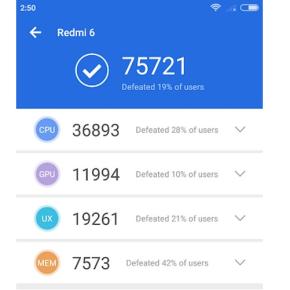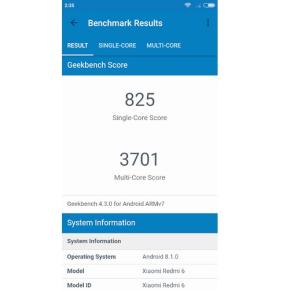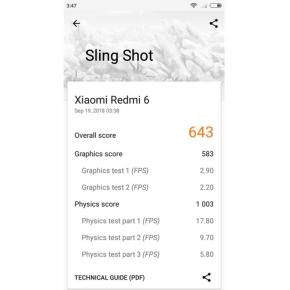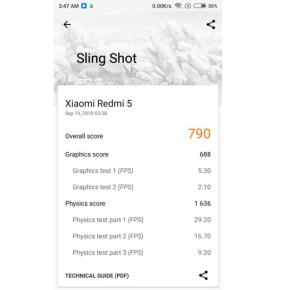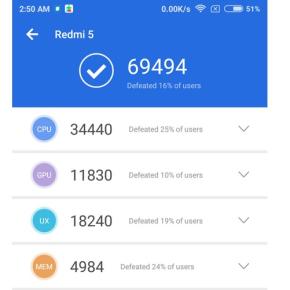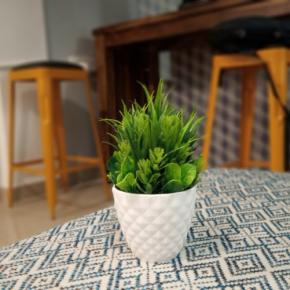Xiaomi’s Redmi series has been consistently ranked as the king of the budget segment, and rightfully so, because the Redmi smartphones offer the best hardware and a superior user experience at a very competitive price point. But has Xiaomi lost its edge when it comes to the company’s bread-and-butter Redmi smartphones, or has the arrival of attractive smartphones from other brands taken away the limelight from the Redmi series?
Well, today we have the recently launched Redmi 6 for review, Xiaomi’s latest attempt to consolidate its dominance in the entry-level smartphone market. We have the Redmi 6’s low-end variant for review which packs 3GB of RAM paired with 32GB of internal storage and is priced at Rs. 7,999. So, let’s delve into an in-depth assessment of the Redmi 6’s hardware and software and find out whether it is still the budget champion.
Specifications
The Redmi 6 is an entry-level smartphone through and through, and its specifications narrate the same story. So, what makes the device stand out? Well, it’s obviously the competitive pricing at which you get a device which packs a dual rear camera set-up, a MediaTek Helio P22 processor which is coupled with 3GB of RAM and 32GB of internal storage. Take a look below to find out the complete details about the Redmi 6’s specs:
| Display | 5.45-inch HD+ |
| Processor | MediaTek Helio P22 chipset |
| RAM | 3GB |
| Storage | 32GB/64GB, expandable up to 256GB via microSD |
| Rear Cameras | 12MP + 5MP |
| Front Camera | 5MP |
| Battery | 3,000mAh |
| Software | Android 8.1 Oreo with MIUI 9 |
| Dimensions | 147.5mm x 71.5mm x 8.3mm |
| Connectivity | 802.11b/g/n, 2.4G WiFi / WiFi Direct, Bluetooth 4.2 |
What’s In The Box?

The Redmi 6 comes packaged inside a minimalist small box which packs just the basic accessories, and honestly, we can’t complain about the lack of extra goodies given the smartphone’s pricing. Here’s what you get inside the Redmi 6’s retail package:
- Redmi 6
- microsUSB Type-A cable
- A 5V/1A charger
- SIM ejector pin
- User manual
Design and Build Quality
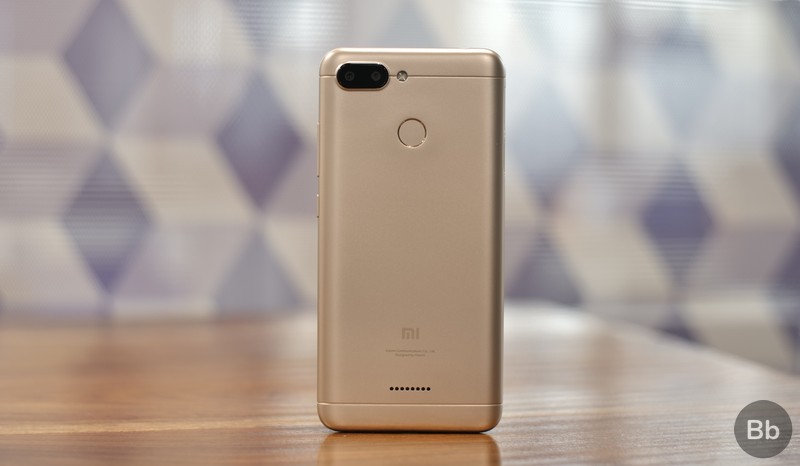
If you have used an entry-level Redmi smartphone before, you must be aware of their plasticky build, and the Redmi 6 is no different. What surprised me was Xiaomi’s decision to downgrade the Redmi 6’s build quality compared to its predecessor, the Redmi 5. The Redmi 6 is made out of plastic, and the version we have for review has a gold paint job. The device has rounded corners and smooth edges, with the front panel extending all the way to the edges with a very noticeable bump.
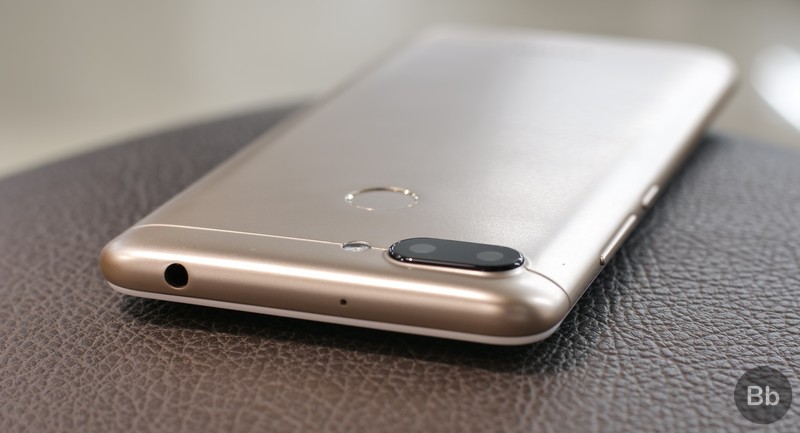
On the other hand, the Redmi 5 had a metallic build which provided a great in-hand feel, and even though it is around 10 grams heavier than the Redmi 6, the added bulk definitely provided a more assuring feel about the device’s durability aspect. Moreover, the understated gold paint job on the metal-made Redmi 5 looked and felt much better in hands than the glossy gold shade of the Redmi 5, which make the device more slippery. So yes, Xiaomi has definitely cut some corners here and has downgraded the build quality.

Coming back to the Redmi 6, the signature dual-band design with two plastic-made bands at the top and bottom edges of the rear panel are here to stay. The power and volume buttons are covered in the same color as the rest of the body, and they provide a nice tactile feedback without feeling mushy.
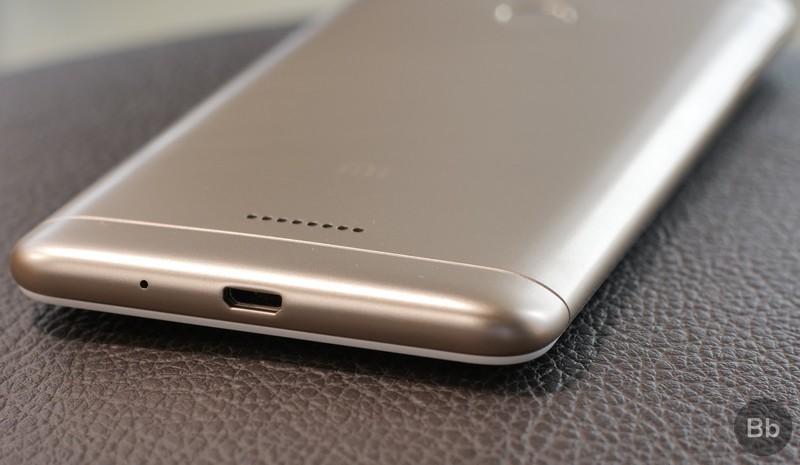
The left corner of the rear panel is where the dual camera set-up and the LED flash are located, and below it, is the fingerprint scanner which is surprisingly fast. On the front is the HD+ display with rounded corners and white bezels surrounding it. The left edge features two slots, one of which houses a microSD + nano-SIM slot, while the other one hosts a single nano-SIM slot.
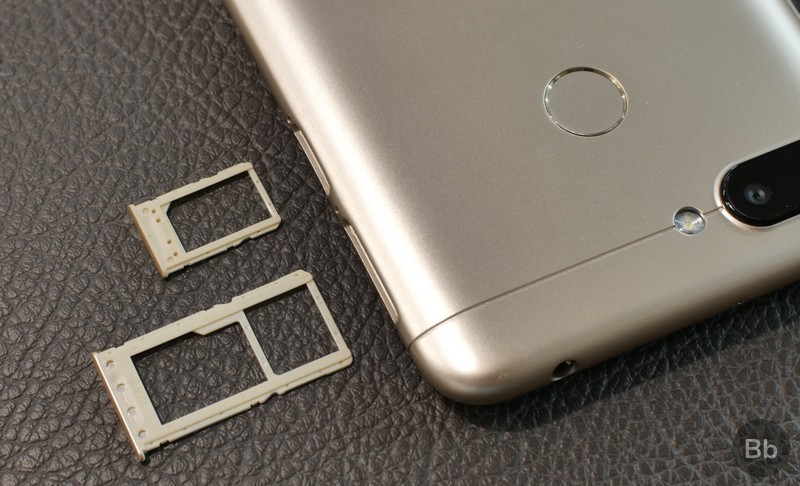
What has also changed in the Redmi 6 is that Xiaomi has moved the speakers from the bottom edge to the rear panel just below the Mi branding, while the 3.5mm headphone jack is still there at the top edge. Overall, the Redmi 6 has a visibly smaller profile than its predecessor and is a joy to handle, thanks to its smaller footprint, especially if you struggle while using the large screen smartphones out there.
But if aesthetics and better build quality are what you are after, the Redmi 5 is hands-down the better option. You can also check out the Realme 2, which offers a unique dual-glass design with some eye-catching patterns on the rear panel.
Display

The Redmi 6 packs a 5.45-inch HD+ IPS LCD display with an 18:9 aspect ratio that offers a 1,000:1 contrast output and a pixel density of 295 PPI, which is a slight bump from the 282PPI pixel density offered by the Redmi 5. The display is surrounded by thick white bezels with curved edges, but the edges of the glass panel protrude significantly from the surrounding plastic encasing.
As for the optical output, the display is sufficiently bright and will serve you well in dim as well as well-lit indoor environments, but when it comes to outdoor visibility, the result can be called satisfactory at most. The colors fade out quickly and visibility becomes an issue under direct sunlight as soon as you start rotating the display.

At maximum brightness, the display renders punchy shades but color accuracy is not optimal, especially under direct sunlight. Another qualm I have with the Redmi 6’s display is that it has a slightly reddish undertone to it. However, the device allows you to choose between three contrast settings to better optimize the output with external lighting conditions, and there is also an option to tweak the color reproduction based on the hue warmth.

Color reproduction is a hit and miss, and it becomes quite noticeable while you are watching videos on the device. Details are missing, with a particular sore point being the edge reproduction and sharpness of the objects in a video, thanks in no part to the HD+ resolution, which also limits the quality of videos you can stream on platforms like YouTube. However, if you factor in the price tag of the device, you can’t really expect Xiaomi to pack a FullHD panel at that price point.
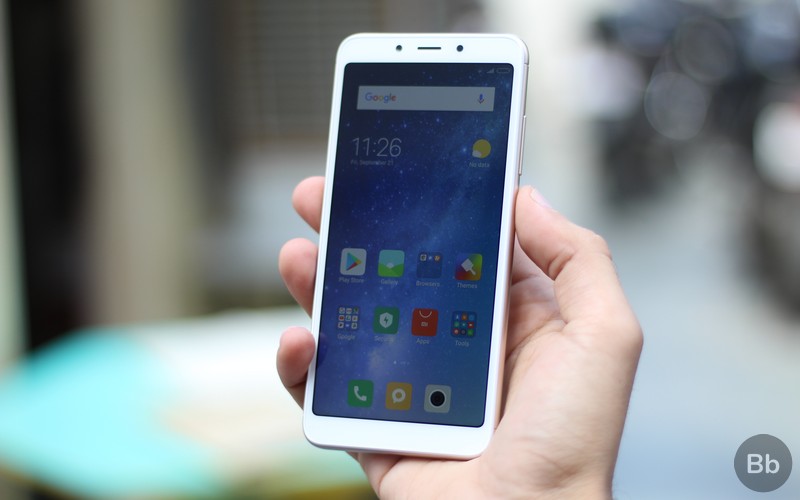
Overall, the Redmi 6’s display is just decent enough to act as your daily driver, provided you can ignore the underwhelming sunlight legibility, inaccurate color reproduction and lack of crystal clear visual details during media consumption. But for the user base targeted by the Redmi 6, the aforesaid parameters would be equivalent to nitpicking, and as such, we give the Redmi 5’s display a thumbs up for the value it offers at its Rs. 7,999 price tag.
Software
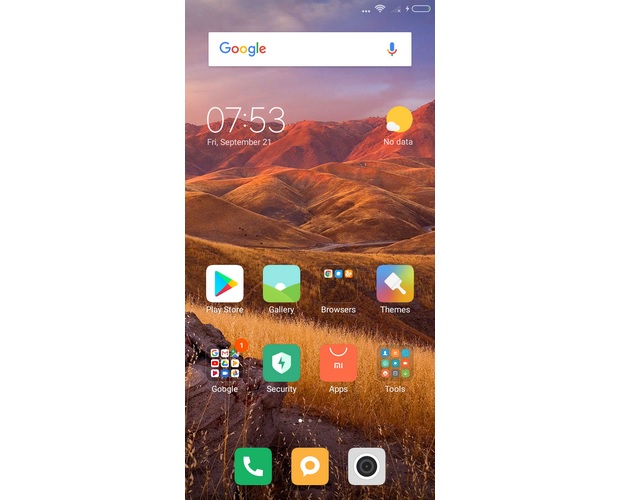
I won’t mince words here, but MIUI is an acquired taste. The Redmi 6 boots MIUI 9.6 based on Android 8.1 Oreo. While Xiaomi has done a commendable job in improving MIUI and making it as feature-rich and intuitive as possible, there is no beating the zippy experience provided by pure Android. Then there are the annoying ads, which further make it painstakingly difficult to start liking MIUI even a little bit.

But that doesn’t mean MIUI misses out on functionality, on the contrary, it is a treasure trove of useful features. A native AI-based assistant, smart app launcher, image search, quick reply, the gesture-based notification controls, and some neat customizations tools are among the features which make MIUI an excellent option.
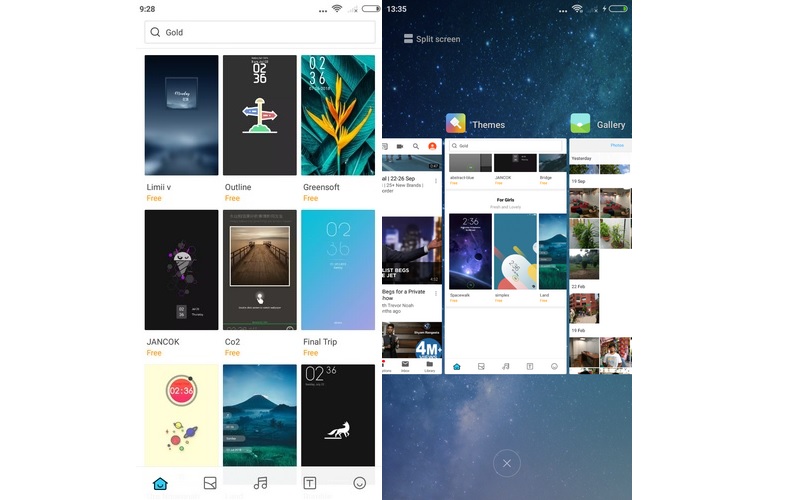
As for the MIUI experience on the Redmi 6, the heavy software overlay and bloatware takes a toll on the overall performance, something which the sheer number of features cannot help redeem the device from (More on it in the performance section below). But if you’ve used a Xiaomi device before, you’ll feel right at home and will also appreciate the new features that have been added with the arrival of Android 8.1 Oreo.

I personally like MIUI, but MIUI’s aesthetics are what ticks me off, however, that is not something which can’t be solved. You can always download a third party launcher such as Nova and the Rootless Launcher, along with some stock Android-looking icon packs to give the MIUI’s interface a visual makeover.
Performance
Now let’s address the elephant in the room: the Redmi 6’s performance. The Redmi 6 packs an octa-core MediaTek Helio P22 (MT6762) processor clocked at 2.0 GHz, paired with a PowerVR GE8320 GPU, 3 gigs of RAM and 32GB of internal storage. The hardware appears to be adequate for an entry-level device on paper, but real life performance depends on how you intend to use the device.
If you use the Redmi 6 as your daily driver, the device would serve you well and blaze past through a majority of tasks. But if you are into intensive multitasking and gaming, the Redmi 6 is just not the right device.
Before we delve into details about how the device performs when it comes to day-to-day tasks, let’s take a look at how the Redmi 6 performs on the synthetic benchmark tests.
The synthetic benchmark scores of the Redmi 6 are nothing extraordinary and are strictly in line with the figures you would expect from an entry-level processor. But what surprised me was the fact that it does not bring that much of an improvement compared to the Snapdragon 450 inside its predecessor, the Redmi 5.
And even more surprising is the fact that Redmi 5 performed better than the Redmi 6 in day-to-day tasks, be it multi-tasking, gaming, photography, and media consumption. Here, take a look at the benchmark scores of the Redmi 5, and you will notice that the performance upgrade brought by the Redmi is not so significant after all.
Benchmark scores aside, the Redmi 5 is neck to neck with the Redmi 6 in terms of performance, and in some cases, performs even better than its successor. So, if your sole criteria to upgrade is performance, the Redmi 5 will serve you just fine. But since the Redmi 6 boots Android Oreo, it will get more new features and optimizations via updates compared to its predecessor, so the Redmi 5 would be a smarter choice in this regard. Now, lets come to the performance part.
My first experience with the Redmi 6 was quite an unpleasant one, because the moment I powered on the smartphone for the first time, it started to stutter and showed a visible lag during multitasking.
And I am not even talking about intensive multitasking and split-screen multitasking here. After updating the device, I found that the stuttering issue reduced considerably, but was not eradicated entirely. I would like to make a point here, and it is entirely based on my experience with the Redmi 5 and Redmi 6. I think that the Snapdragon 450 was better optimized for MIUI to deliver a smoother experience on the Redmi 5 than the MediaTek Helio P22 in case of the Redmi 6, which is definitely something you should keep in mind.
Coming back to the Redmi 6, there is another issue that will annoy users is the inconsistency of the navigation gestures. While the swipe gestures from the bottom bezels worked perfectly fine, swiping from the side bezels to go back was a hit or miss, which is something that frustrated me. But then, you can always revert to the on-screen navigation buttons. But in general, the Redmi 5 was quite zippy, and I can say it without an iota of doubt that the device performs better than any other smartphone out there in the same price bracket.
Now let’s talk a little bit about gaming on the Redmi 6. You might question whether performing a gaming test on a budget device is really necessary. But then, let’s accept it, a large section of smartphone users usually have a game or two installed on their device which they play casually, and ever since the multiplayer gaming trend started (Hello, PUBG and Mini Militia), smartphone gaming experience has become an important factor. So, how did the Redmi 6 fare at gaming?
Well, it exceeded my expectations.
I started the gaming test with some lightweight titles such as Angry Birds, Temple Run 2 and Subway Surfer among others, and they all performed reasonably well. But then, I switched to graphics-intensive titles such as PUBG, Asphalt 8 and Injustice: Gods Among Us, and I was surprised how well the affordable Redmi smartphone handled them.

Of course, PUBG was optimized to play the game at low graphics settings by default due to the low-end system resources, which is why I didn’t even bother to amp up the settings to medium or high, because I didn’t want to ruin my battle royale experience with stutters. But then came the surprise. (And hey, I did win my first and only PUBG game on the Redmi 6, not bragging though.)
I completed a whole match in classic mode on the Erangel map without even a single instance of stuttering and lag. Despite my initial doubts, the gameplay was buttery smooth.

I tried out a few other resource intensive games too. In case of Asphalt 8, the gameplay was smooth and lag-free, although occasional frame drops happened and graphics rendition was underwhelming, but the experience was enjoyable nonetheless.

I also tried Injustice: Gods Among Us, a game which really pushes the system resources to their limit. On the Redmi 6, the fighting game performed reasonably well, and although the graphics were set to their lowest, the gameplay was smooth yet again, barring a few sporadic instances of stuttering.
All in all, gaming on the Redmi 6 was a pleasant experience and surprising too, given how well it handled graphics-intensive games on its entry-level hardware.
So, kudos to Xiaomi for again delivering an excellent affordable smartphone that really won’t leave budget-conscious buyers wanting for more.
Camera

The Redmi 6 packs a dual rear camera set-up consisting of a primary 12MP sensor with F/2.2 aperture and 1.25μm large pixels, accompanied by a 5MP secondary sensor, while there is a 5MP front camera with a F/2.2 aperture and 1.12um pixels. The Redmi 6’s camera is backed by a ton of features such as Phase Detection Auto Focus (PDAF), AI-powered portrait mode, Low light photo enhancement, HDR, AI beautification, age detection and Face Unlock.
The Face Unlock works fine in well-lit conditions, but its accuracy takes a hit in dim environments, so, we recommend you to rely on the good ‘ol fingerprint sensor which is blazing fast.
As far as the Redmi 6’s camera performance is considered, it rises above its budget status and delivers some pretty good quality images for a smartphone which starts at just Rs. 7,999.
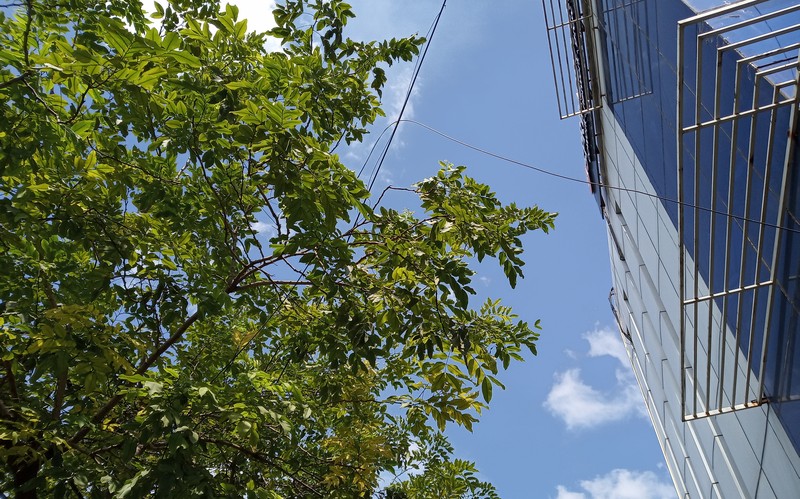
The Redmi 6’s rear camera set-up is more capable than you can ask for in that price bracket. In well-lit conditions, it can take click some really nice photos with good color accuracy and minimal noise. I can confidently say that in daylight, the Redmi 6 is simply the best at its price point. Just look at the shot above and you will understand what I am talking about.
The image has been clicked with the default camera app and without any filters whatsoever. The colors are intact, the vibrancy is adequate and the depth effect is quite good too. I was quite impressed by it, and even though there are a ton of filters to play with and a number of photography tools at your disposal, the device can capture some nice images without using any of them.
The portrait shots clicked by the Redmi 6 are quite vibrant and the depth reproduction is adequate too. The colors were accurate, especially if the photos are clicked in outdoor environments under abundant sunlight. However, I noticed a peculiar issue. In some portrait shots, the blurring turned out to be hazy with a noticeable white undertone, and it also reduced the color output of the objects in the background to the point of making them appear dark and lacking saturation. (See the first image in the gallery above). However, this issue occured only sporadically.
When it comes to low-light shots and images clicked in artificial light, the Redmi 6 delivers mixed results. My biggest qualm with the Redmi 6’s low-light imaging capabilities is the below-par color reproduction. Even though images don’t turn out be grainy, which is a good thing, there is still a lot of noise and the colors don’t appear lively because their difference from the true shade is quite noticeable.
When it comes to selfies, the Redmi 6 delivers a mixed bag of results. The front sensor manages to capture some decent shots, but color accuracy is something that is quite disappointing. The shades are inaccurate, washed out and there is more skin smoothening than you would like. Another aspect is the details, which are negligible to say the least. The moment you zoom into an image captured by the front camera, you will start seeing distortion and blurring.
As for portrait shots taken by the front sensor go, the result is vibrant if the images are clicked in bright environments, preferably under outdoor conditions. But when it comes to locking the focus and edge detection, there is some noticeable inaccuracy. For example, the front sensor detected the face and torso of a person in focus, but blurred the subject’s hands. The blurring between the foreground and the background is just adequate, but if you zoom in, you will notice that the edges of the object in focus and the background are not that well-defined.
If you ask about my final opinion, I can confidently say that the Redmi 6 punches way above its class, and won’t leave you wanting for more.
Battery Life
The Redmi 6 packs a 3,000 mAh battery, which doesn’t sound much capacious at first, but during day-to-usage, it performed reasonably well. An HD+ display coupled with a low-end MediaTek Helio P22 chipset is not much of a battery draining set-up after all. I managed to register an average screen time of around 10 hours on the Redmi 6, which is definitely impressive given its battery size.

As far as regular usage is concerned, which involves constantly being connected to WiFi network, watching a few YouTube videos, clicking pictures, surfing social media, a little bit of gaming, and of course, making calls, the Redmi 6 comfortably lasted for around 7 and a half hours on an average.
I won’t say that the Redmi 6’s battery performance is a letdown, but it gets the job done pretty well, but yes, you will have to charge it again as soon as you reach home after a day’s work.
As for charging time, the Redmi 5’s battery went from 0% to 100% in approximately 145 minutes, however, the charging time can vary if keep using the device while it is plugged into a power source. All in all, you can extract a day full of screen-on time from the Redmi 6 with moderate usage, which is definitely an uplifting assurance.
Should You Buy It?
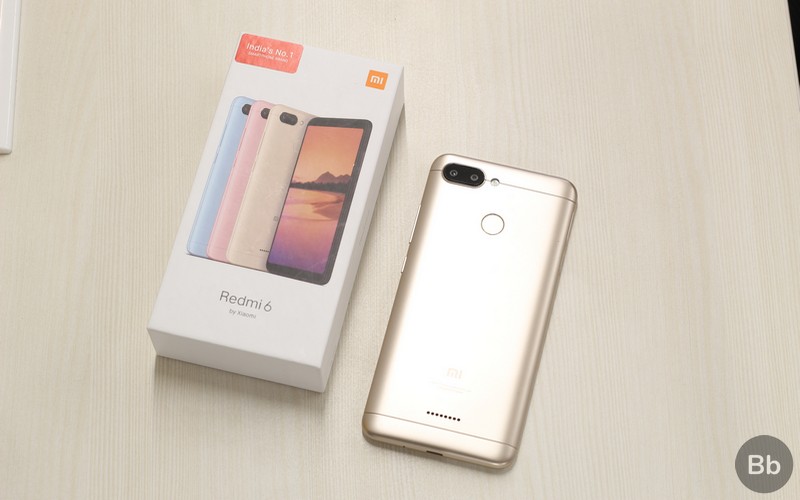
Now comes the real question. Should you buy the Redmi 6? A resounding ‘YES’. Do the Redmi 6’s strengths do a good job at outweighing its flaws? Definitely ‘YES’. Should you look for alternatives in the similar price bracket? Well, it is your right to do the research, but we have done the heavy lifting for you, and you need not bother taking suggestions about the Redmi 6’s efficiency, performance and value, because the device is simply unbeatable at its price point.
The Realme 2 is a compelling option, but sluggish performance and underwhelming cameras are some serious shortcomings you simply can’t ignore. Then what about the Redmi 5? Well, its also a good option, but being a previous generation device means updates will be a major issue, so the arrival of new features will be uncertain, to say the least. So, the Redmi 6 is the safer bet.
Now, here we are with a final statement to make- The Redmi 6 is definitely worth every penny, and I can recommend it without any hesitation whatsoever.
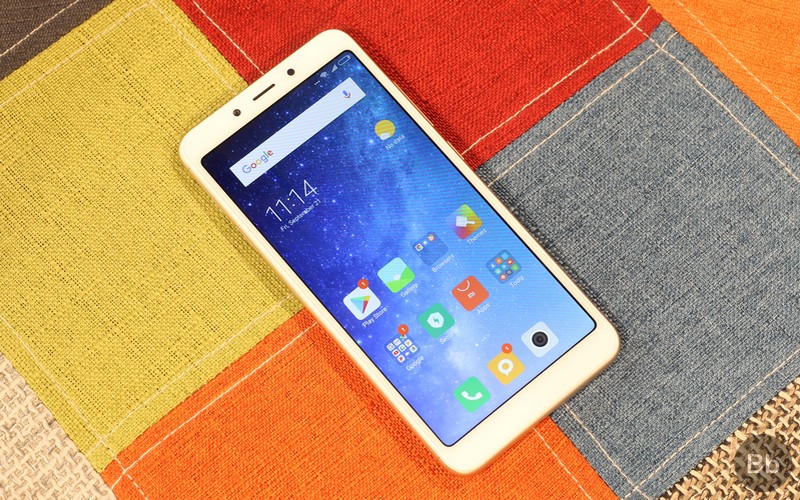
Pros
- Surprisingly good performance
- Good battery life
- Decent cameras for the price
Cons
- MIUI can be a little sluggish
- Plasticky build
SEE ALSO: Realme 2 Review: Not The Realme 1 Successor We Expected
Redmi 6 Review: Maximum Bang For Your Bucks

To sum up, the Redmi 6 is an awesome device that is unbeatable at its price, provided you stick with the low-end variant with 3GB RAM and 32GB of internal storage. Why? Because the higher-end model with 64GB of internal storage is priced at Rs. 9,499, which then puts it in direct competition with the Redmi 6 Pro, which starts at Rs. 10,999 and it’s the better phgoine.
So, here is the conclusion, and it is a pretty straightforward one. If your budget absolutely can’t exceed the Rs. 8,000 mark, go with the Redmi 6 without any concerns whatsoever.
Buy Redmi 6 from Flipkart (Starts at Rs. 7,999)









